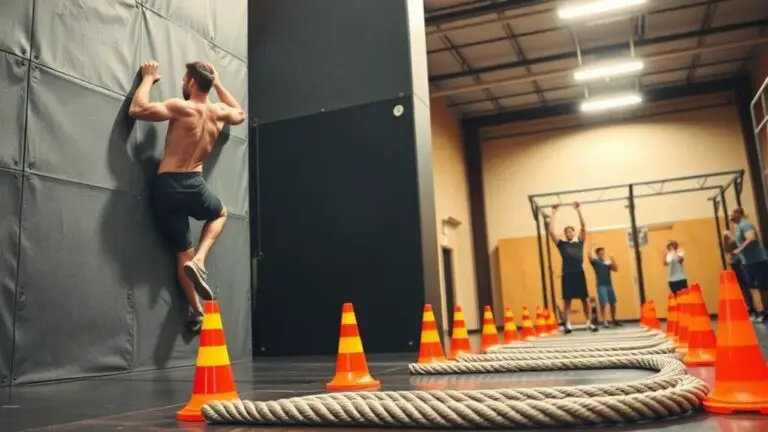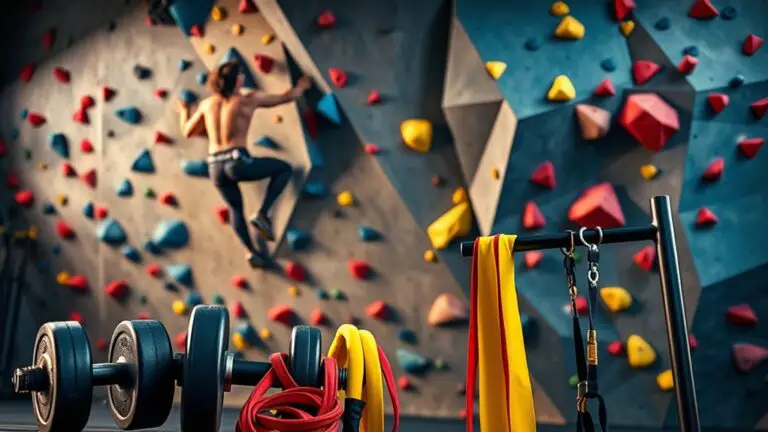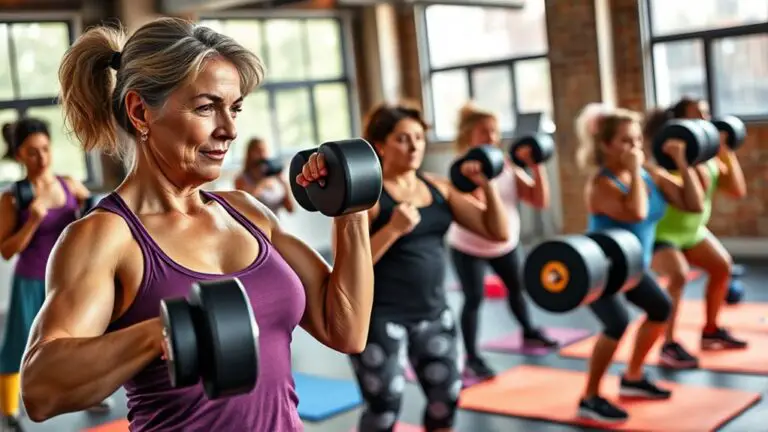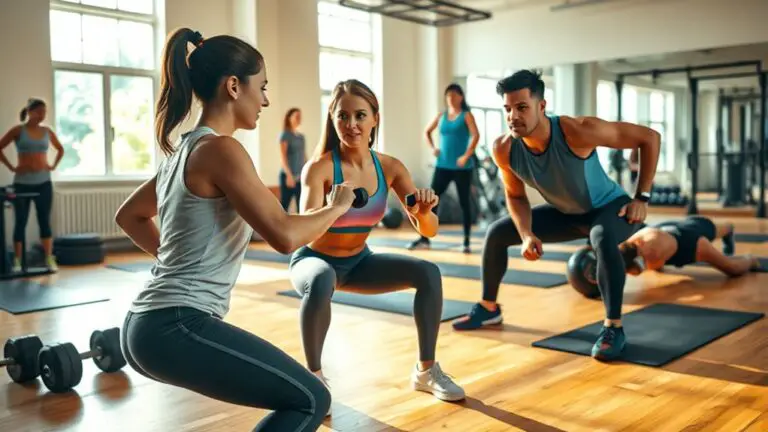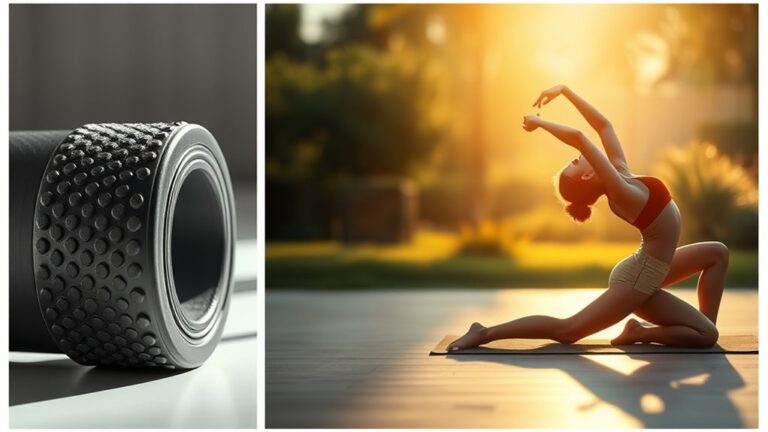The Best Functional Fitness Exercises for Athletes
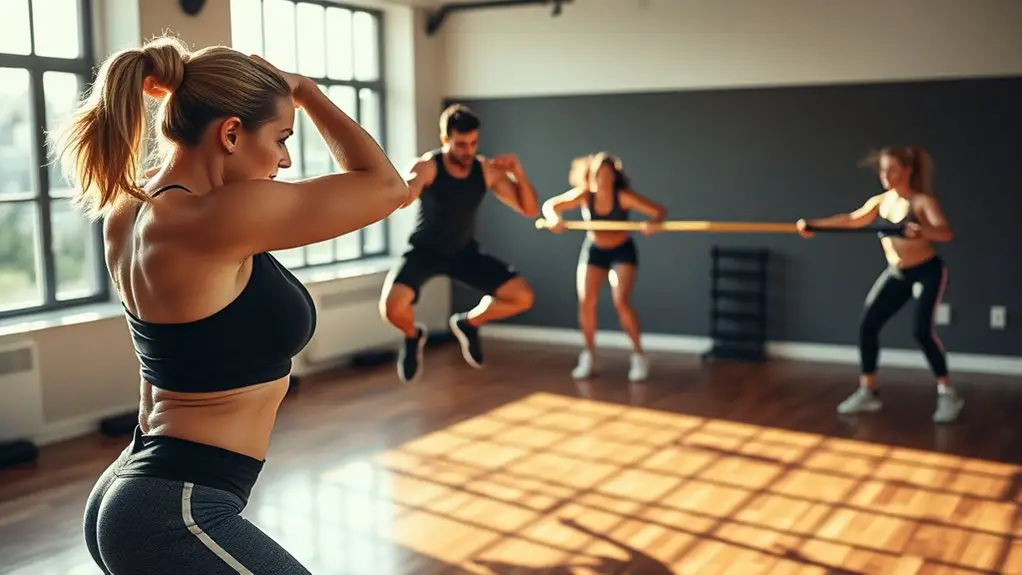
To excel in sports, you should incorporate functional fitness exercises like squats, deadlifts, and lunges into your routine. Squats build lower body strength, while deadlifts enhance power and stability. Lunges improve agility and balance, essential for quick direction changes. Don’t forget plyometric exercises to boost explosive strength and core workouts for a solid foundation. By focusing on these key movements, you’re setting yourself up for better performance and athletic success. Explore these exercises further for even more gains.
Squats: Building Lower Body Strength
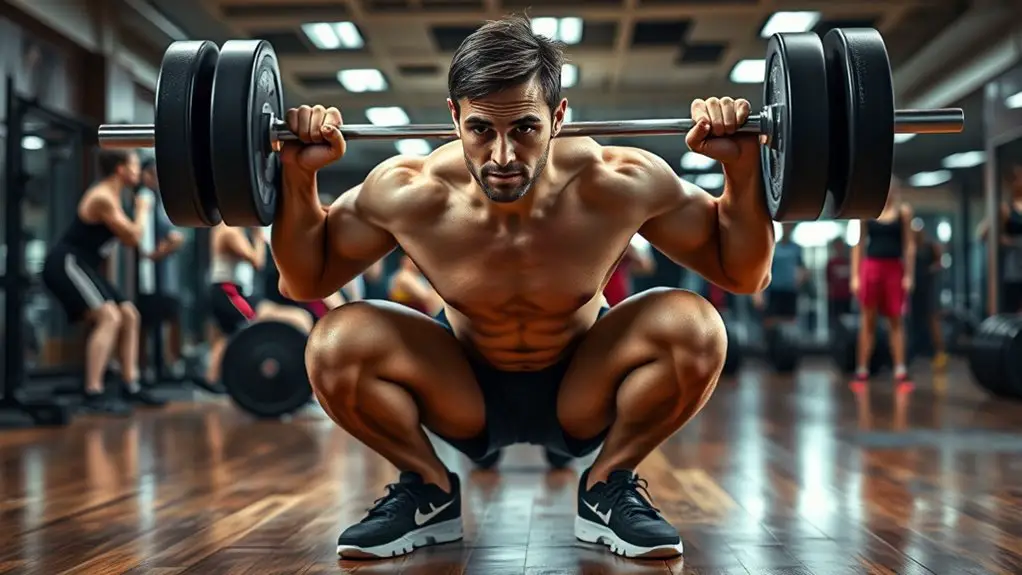
When you incorporate squats into your training regimen, you’re not just building lower body strength; you’re laying the foundation for improved athletic performance. Squats engage major muscle groups, including your quads, hamstrings, and glutes, providing a solid base for explosive movements. The squat benefits extend beyond strength; they also enhance your balance, flexibility, and core stability, essential for any athlete.
Exploring squat variations, like front squats, goblet squats, or single-leg squats, can keep your workouts dynamic and target different muscle groups effectively. Each variation challenges your body in unique ways, promoting overall strength development.
Deadlifts: Enhancing Power and Stability
Deadlifts are a powerhouse exercise that not only builds strength but also enhances your overall stability, making them a must-have in any athlete’s training program. By engaging multiple muscle groups, including your back, glutes, and legs, deadlifts contribute to effective strength training that translates to improved performance in your sport.
When you perform deadlifts correctly, you’re not just lifting weights; you’re reinforcing your core stability, which plays a vital role in injury prevention. A strong foundation helps you maintain proper form during athletic activities, reducing the risk of strains and sprains.
Incorporating deadlifts into your routine will elevate your power output and guarantee you’re ready to tackle the demands of your sport. Start with lighter weights to master the technique, then gradually increase the load. Embrace the challenge and watch as you gain strength, stability, and confidence in your athletic abilities!
Lunges: Improving Agility and Balance
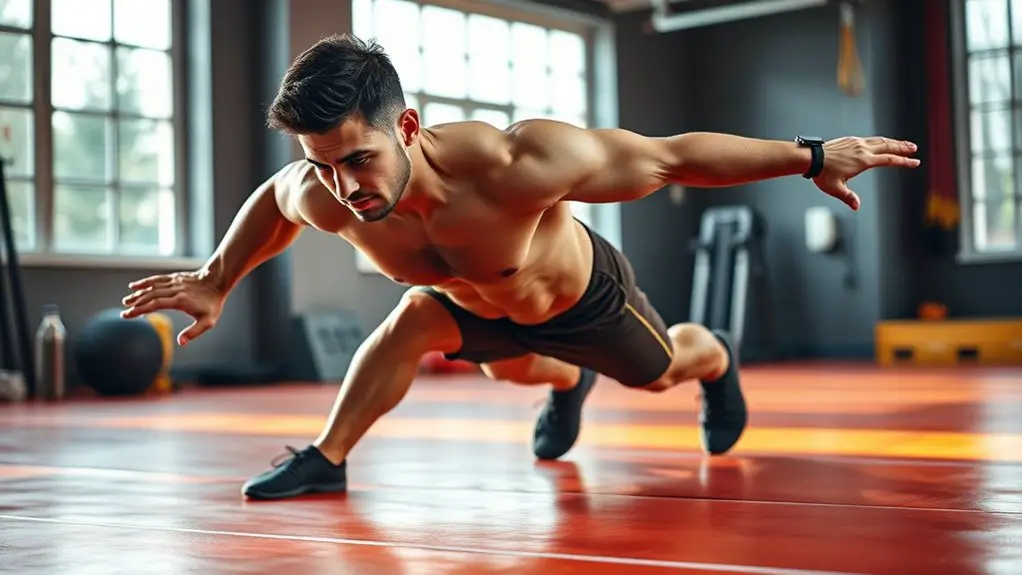
Building on the strength and stability gained from deadlifts, lunges are a dynamic exercise that greatly enhances agility and balance. They target multiple muscle groups, improving your overall coordination and body awareness. Incorporating lunge variations, like reverse lunges or lateral lunges, can challenge your stability further, making them ideal for athletes looking to refine their movements.
To maximize the benefits, combine lunges with agility drills. For instance, perform a lunge followed by a quick lateral shuffle to engage your fast-twitch muscles and improve reaction time. This combination not only bolsters your strength but also trains your body to switch directions efficiently, essential for any sport.
Plyometric Exercises: Boosting Explosive Strength
Plyometric exercises, often referred to as “jump training,” are essential for developing explosive strength in athletes. These dynamic movements, such as box jumps and depth jumps, engage your fast-twitch muscle fibers, enhancing your power development and athletic performance. When you incorporate jump training into your routine, you won’t just improve your vertical leap; you’ll also boost your overall speed and agility.
The benefits of plyometrics extend beyond mere aesthetics. They teach your muscles to exert maximum force in short bursts, which translates to improved performance in your sport. Plus, these exercises enhance coordination and balance, critical components for any athlete looking to excel.
To get started, focus on mastering your form and gradually increase intensity. Remember, consistency is key. By dedicating time to plyometric training, you’re setting yourself up for greater success on the field, court, or track. Embrace the challenge and watch your explosive strength soar!
Core Workouts: Strengthening the Foundation for Performance
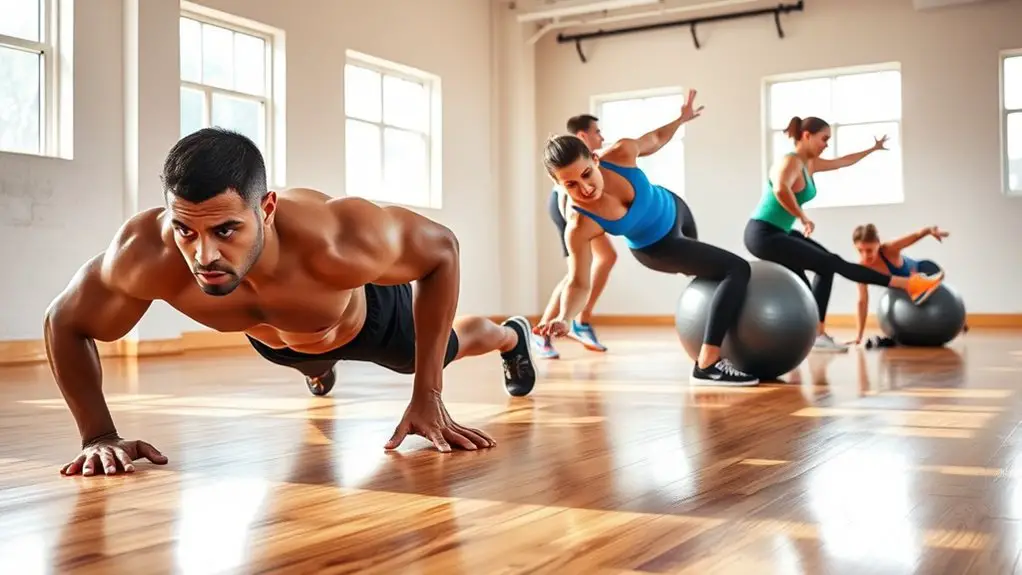
While explosive strength is vital for athletic success, it’s equally important to focus on your core. A strong core stabilizes your body, enhances balance, and improves overall performance. Incorporating core workouts, like plank variations, can greatly boost your strength and endurance. Planks not only target your abdominals but also engage your shoulders and lower back, creating a solid foundation for all movements. Additionally, don’t underestimate the power of rotational movements. Exercises like Russian twists or medicine ball throws help develop the oblique muscles, essential for athletes in sports requiring quick turns and changes in direction. It’s also beneficial to incorporate effective alternatives like Hanging Leg Raises and Knee-to-Elbow Raises for comprehensive core strengthening.
Frequently Asked Questions
How Often Should I Incorporate Functional Fitness Exercises Into My Routine?
Think of your body as a finely tuned machine; to keep it running smoothly, you need to maintain it regularly. Incorporating functional fitness exercises into your routine three to four times a week is ideal for building strength and agility. Tailor your workout schedule to fit your lifestyle, ensuring you balance intensity and recovery. Consistency is key—embracing this training frequency will enhance your overall performance and keep you motivated on your fitness journey.
Can Functional Fitness Exercises Prevent Injuries in Athletes?
Yes, functional fitness exercises can play an essential role in injury prevention for athletes. By improving strength, flexibility, and stability, these exercises enhance your overall performance while reducing the risk of injuries. When you incorporate movements that mimic your sport, you’re training your body to handle the specific stresses it encounters. This not only boosts your athletic prowess but also keeps you in the game longer, allowing you to reach your full potential.
What Equipment Is Necessary for Functional Fitness Training?
Think of your body as a finely-tuned machine, and the right equipment is the fuel that keeps it running. For effective functional fitness training, you’ll need essentials like kettlebells for swings, which build strength and stability, and battle ropes to enhance endurance and coordination. These tools aren’t just equipment; they’re your allies in achieving peak performance. With the right gear, you can release your full potential and prevent injuries while training effectively.
How Do I Progress in My Functional Fitness Workouts?
To progress in your functional fitness workouts, focus on progress tracking and workout variations. Start by setting clear goals and regularly evaluating your performance. Incorporate different exercises and vary your routines to challenge your body and prevent plateaus. Increase weights, reps, or intensity gradually, ensuring each session feels rewarding. Remember, consistency is key, so stay motivated and celebrate small victories along the way to keep pushing your limits and achieving results.
Are Functional Fitness Exercises Suitable for All Sports?
Think of functional fitness as a versatile toolbox; it can adapt to any sport’s unique challenges. Just like a skilled craftsman uses different tools for specific tasks, you can incorporate exercise variations for sport-specific adaptations. Whether you’re a runner, swimmer, or weightlifter, functional exercises can enhance your performance. By focusing on movements that mimic your sport, you’re setting yourself up for success and making your training truly effective. Embrace the versatility!
